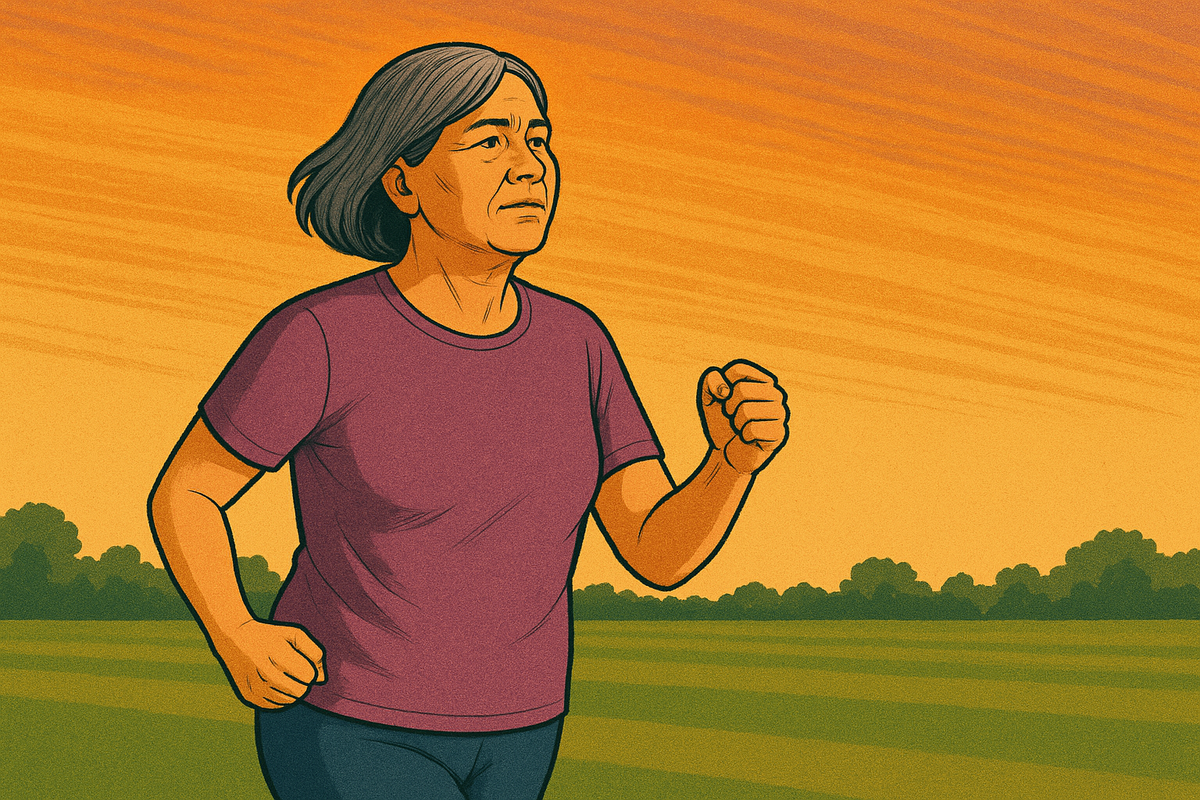
Have you been feeling down, anxious, or just not quite yourself as you navigate perimenopause or menopause? You’re not alone. Up to 26% of women experience depression during this transition—nearly triple the rate before menopause—and about 13% struggle with anxiety. But here’s the good news: your gym shoes might be more powerful than you think.
The Menopause-Mood Connection
Think of menopause as your body’s most dramatic renovation project since puberty. With hormones swinging like wrecking balls, it’s no wonder your emotional foundation might feel shaky. Hot flashes wake you at night, mood swings catch you off guard, and sometimes anxiety creeps in without warning.
“But I’m not the exercise type,” you might be thinking. Here’s where science delivers some exciting news: you don’t need to be a fitness fanatic to reap the mental health benefits of movement.
What the Research Shows
A comprehensive review of 21 scientific studies with over 2,000 participants recently confirmed what many healthcare providers have suspected: physical activity significantly reduces both depression and anxiety symptoms during menopause.
The best part? Both gentle, low-intensity exercises and moderate workouts showed impressive benefits. Whether you’re a yoga enthusiast or prefer a brisk neighborhood walk, your body—and mind—will thank you.
Finding Your Movement Medicine
Not sure where to start? Here are some science-backed options that have been shown to improve menopausal mood symptoms:
For the Gentle Mover
Walking: Think of it as your most accessible antidepressant—no prescription needed. Studies found even low-intensity walking programs reduced depression symptoms in postmenopausal women. Start with 10-15 minutes and gradually build to 30 minutes most days.
Yoga: Like a mental massage, yoga combines movement with mindfulness. Research shows a 12-week yoga practice can significantly reduce anxiety symptoms, with participants reporting feeling more centered and less overwhelmed.
Stretching: Don’t underestimate the power of a good stretch. In one study, just 10 minutes of daily stretching helped lift depressive symptoms. It’s like hitting the reset button on your nervous system.
For Those Ready for More
Aerobic Exercise: Your heart’s favorite mood booster. Moderate-intensity aerobic workouts—think dancing, swimming, or cycling where you can talk but not sing—have been shown to be particularly effective for both depression and anxiety symptoms.
Traditional Chinese Practices: Tai Chi, Qigong, and Baduanjin are like moving meditations that research shows can reduce symptoms of both depression and anxiety. They combine gentle flowing movements with focused breathing—perfect for days when you need to calm your racing mind.
Make It Work for You
The beauty of this research is its flexibility. Here’s how to apply it to your real life:
Start wherever you are: Can’t face a 30-minute workout? Try 5 minutes. Feeling stiff as a board? Gentle stretching counts too.
Consistency trumps intensity: Like watering a plant, regular attention yields better results than occasional flooding. Aim for movement most days, even if brief.
Pair it with something pleasant: Walk with a friend, stretch while watching your favorite show, or dance to music that makes you happy. This “joy bundling” amplifies the mood benefits.
Track your mood, not just your steps: Notice how different activities affect your emotional state. Your personal data is more valuable than any research study.
Beyond the Research
While the science is clear that exercise helps with menopausal mood symptoms, remember that severe depression or anxiety deserves professional attention. Think of movement as a powerful complement to—not replacement for—appropriate medical care when needed.
The next time a hot flash has you fanning yourself or anxiety has your thoughts spinning, remember this: your body has built-in mood medicine. All you need to do is move to release it.
This article is based on research by Hongyu Yue and colleagues, published in the International Journal of Behavioral Nutrition and Physical Activity (2025). The meta-analysis examined 21 randomized controlled trials on the effects of physical activity on depressive and anxiety symptoms in women during menopausal transition and menopause.
Discover More
- Does Swearing Make You Stronger? the Surprising Science Behind Cursing and Performance
- Power Up Your Performance With Probiotics: How Gut Health Could Be Your Secret Weapon
- Move Your Mood: How Exercise Lifts Depression and Anxiety During Menopause
- The Weekend Warrior vs. Regular Exercise: What's Best for Slowing Down Your Biological Clock?
- Can Creatine Save Your Workout When Cutting Carbs?
- Carnivore Diet for Athletes: Do You Need Carbs After All?
- Mix It Up! How to Combine Cardio and Strength Training for Maximum Results
- Rocking Your Walk: How Unstable Shoes Could Strengthen Your Feet and Improve Your Balance
- Trail Running Safety: Navigate the Path to Injury-Free Adventures
- Tech Your Way to Better Fitness: How Older Adults Are Using Digital Tools to Stay Active
- Rest Periods Matter: Finding Your Sweet Spot for High-Intensity Sprint Training
- Supercharge Your Jump: How Adding Bands to Your Deadlift Can Boost Performance
- Caffeine Before Exercise: Is Your Pre-Workout Cup of Joe Actually Helping You Burn Fat?
- Paws-Itively Perfect Exercise: How Your Dog Can Be Your Best Workout Partner
- The Long and Short of It: How Pole Length Can Boost Your Cross-Country Skiing Performance
- Time-Restricted Eating: Get Leaner Without Losing Your Gains
- Boost Your Strength & Shed Fat: Essential Amino Acids + Resistance Training
- Finding Your Perfect Fit: How Footwear Affects Performance and Injury Risk
- HIIT vs. Moderate Exercise: The Mood Rollercoaster Your Workout Takes You On
- Hydration Hype: Do Specialty Drinks Boost Exercise Performance? See more
